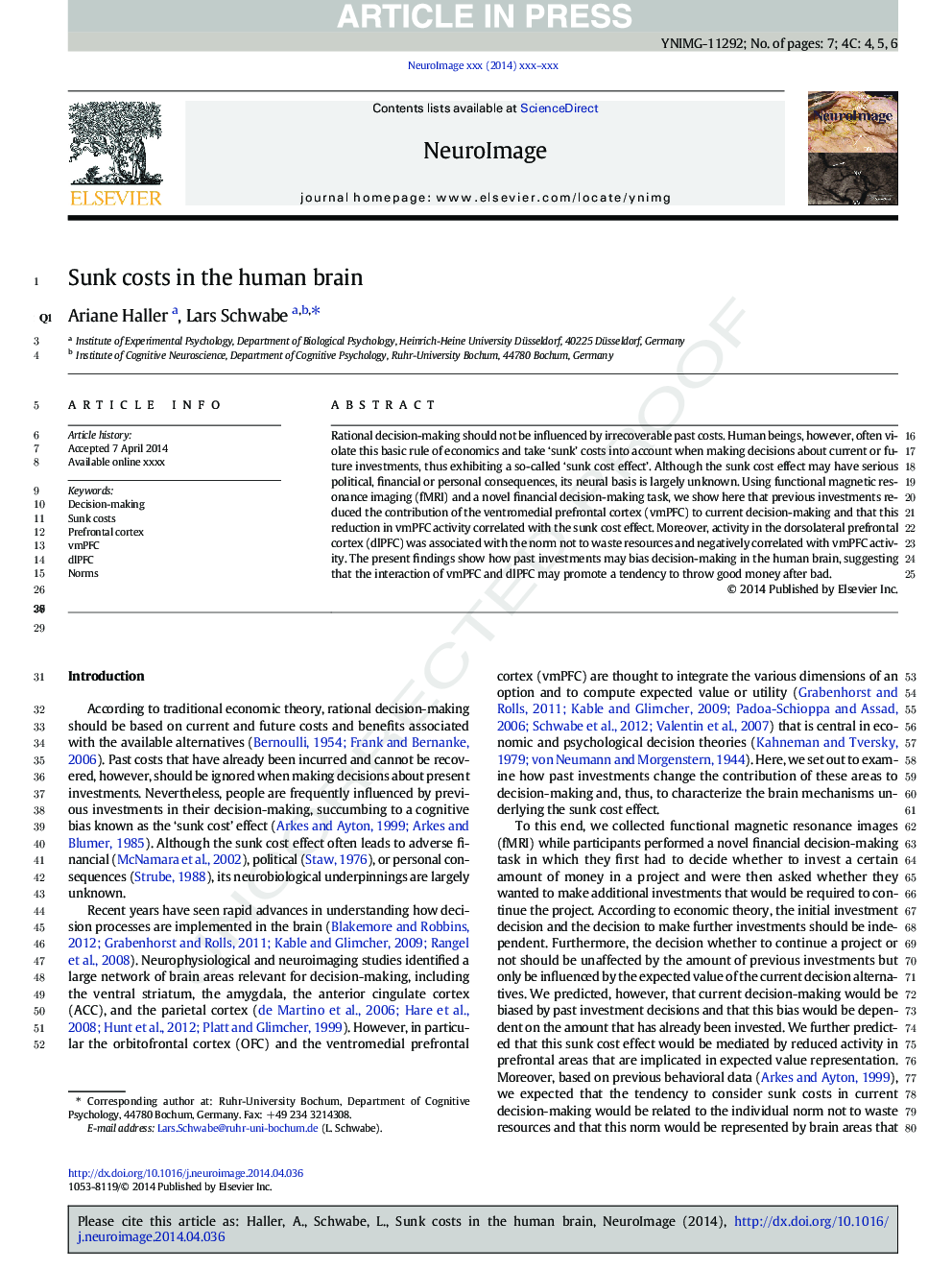| Article ID | Journal | Published Year | Pages | File Type |
|---|---|---|---|---|
| 6027252 | NeuroImage | 2014 | 7 Pages |
Abstract
Rational decision-making should not be influenced by irrecoverable past costs. Human beings, however, often violate this basic rule of economics and take 'sunk' costs into account when making decisions about current or future investments, thus exhibiting a so-called 'sunk cost effect'. Although the sunk cost effect may have serious political, financial or personal consequences, its neural basis is largely unknown. Using functional magnetic resonance imaging (fMRI) and a novel financial decision-making task, we show here that previous investments reduced the contribution of the ventromedial prefrontal cortex (vmPFC) to current decision-making and that this reduction in vmPFC activity correlated with the sunk cost effect. Moreover, activity in the dorsolateral prefrontal cortex (dlPFC) was associated with the norm not to waste resources and negatively correlated with vmPFC activity. The present findings show how past investments may bias decision-making in the human brain, suggesting that the interaction of vmPFC and dlPFC may promote a tendency to throw good money after bad.
Related Topics
Life Sciences
Neuroscience
Cognitive Neuroscience
Authors
Ariane Haller, Lars Schwabe,
